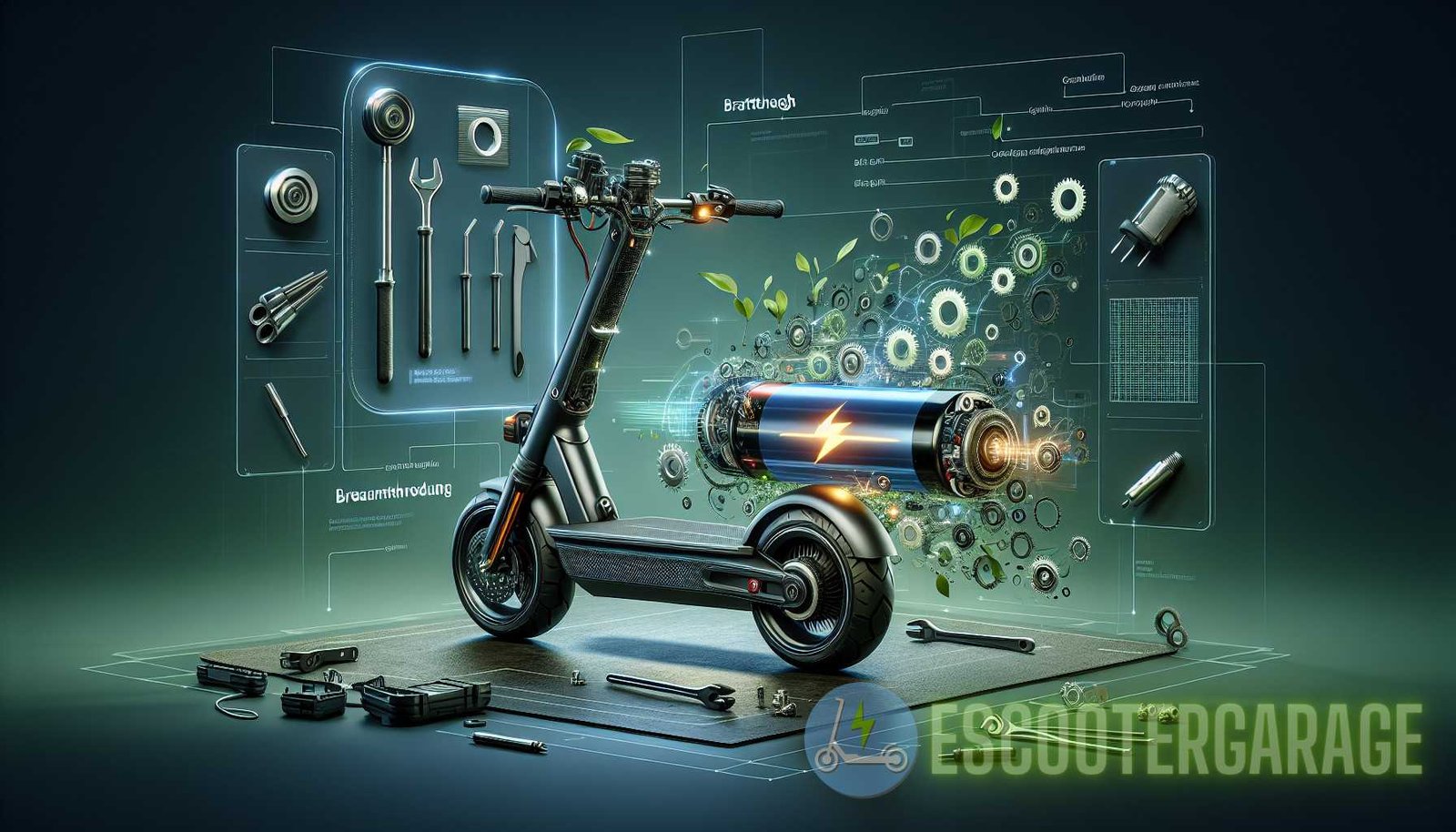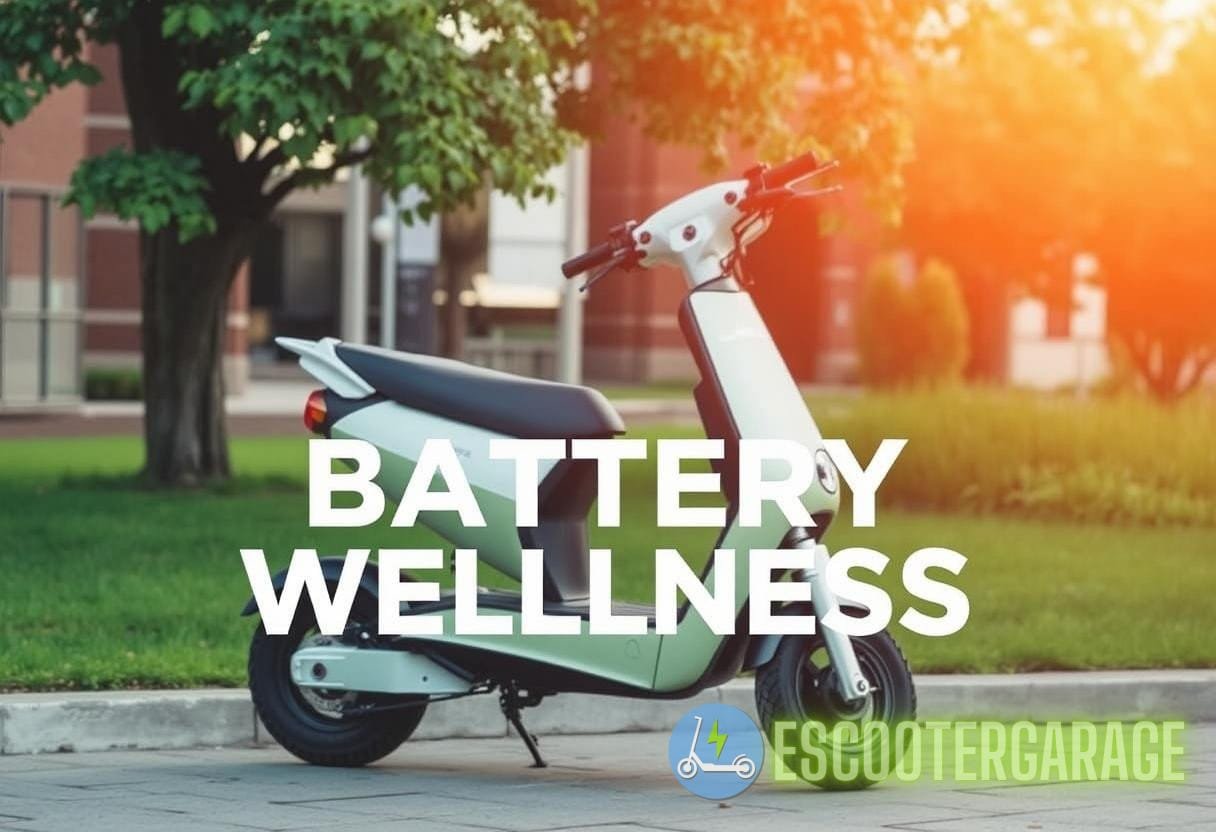Unveiling the Future of eScooter Battery Maintenance: Groundbreaking Insights for Superior Performance
The rise of electric scooters, or eScooters, has revolutionized urban transportation. With their compact size, eco-friendly operation, and ease of use, eScooters have become a popular mode of transportation for many urban dwellers. However, like any other electric vehicle, eScooters require proper maintenance to ensure their longevity and superior performance.
In this article, we will explore the future of eScooter battery maintenance, providing groundbreaking insights into the best practices to optimize battery performance and extend the lifespan of your eScooter. From understanding battery chemistry to implementing efficient charging strategies, we will delve into the world of eScooter maintenance to help you make the most of your electric ride.
The Importance of Regular Maintenance for eScooter Batteries
eScooter batteries are the lifeblood of these vehicles, providing the necessary power to propel riders forward. Just like any other rechargeable battery, eScooter batteries experience wear and tear over time, leading to reduced performance and capacity. Regular maintenance is crucial to ensure that your eScooter battery continues to deliver optimal performance and lasts for as long as possible.
Proper maintenance not only extends the lifespan of the battery but also enhances the overall efficiency and range of your eScooter. By implementing simple yet effective maintenance techniques, you can enjoy a smoother and more enjoyable riding experience, minimizing the risk of unexpected battery failure.
Battery Chemistry and its Impact on eScooter Performance
Before diving into the details of eScooter battery maintenance, it’s essential to understand the fundamental principles of battery chemistry and how it affects the performance of your eScooter.
Most eScooters on the market today utilize lithium-ion batteries, which offer a combination of high energy density, lightweight design, and long cycle life. These batteries consist of positive and negative electrodes immersed in an electrolyte, allowing the movement of lithium ions between the two electrodes during charge and discharge cycles. This movement of ions generates the electrical energy that powers the eScooter.
The performance of lithium-ion batteries is influenced by various factors, including:
- Battery capacity: The total amount of charge a battery can store, measured in ampere-hours (Ah).
- Cycle life: The number of charge and discharge cycles a battery can undergo before its capacity significantly degrades.
- Internal resistance: The resistance within the battery that affects its ability to deliver and receive charge efficiently.
- Self-discharge rate: The rate at which a battery loses its charge when not in use.
Understanding the unique characteristics of lithium-ion batteries is crucial for effective eScooter maintenance. By considering these factors, you can optimize your battery’s performance and prolong its lifespan.
Efficient Charging Strategies for Maximum Battery Life
One of the key aspects of eScooter battery maintenance is implementing efficient charging strategies. By following the recommended charging practices, you can extend the life of your battery and ensure optimal performance.
1. Avoid Deep Discharges
Contrary to popular belief, it is not necessary to fully discharge your eScooter battery before recharging. In fact, deep discharges can shorten the lifespan of lithium-ion batteries. Instead, it is advisable to recharge your eScooter battery when it reaches around 20-30% capacity. By avoiding deep discharges, you can minimize the stress on the battery and prolong its overall lifespan.
By recharging your eScooter battery before it reaches critical levels, you can also maintain consistent performance and avoid sudden power loss during your rides.
2. Optimize Charging Cycles
Lithium-ion batteries have a limited number of charge cycles before their capacity significantly degrades. To maximize the lifespan of your eScooter battery, it’s important to optimize your charging cycles.
Avoid fully charging your eScooter battery to 100% capacity frequently, as it can accelerate the degradation process. Instead, aim for a target range of around 70-80% for everyday use. By limiting the upper and lower charge levels, you can reduce the stress on the battery and prolong its overall lifespan.
In addition, occasional full charge cycles are recommended to recalibrate the battery’s internal circuitry and ensure accurate capacity readings. However, make sure to avoid this practice on a regular basis, as it can accelerate performance degradation.
3. Avoid Excessive Heat
Exposure to high temperatures can significantly impact the performance and lifespan of lithium-ion batteries. To ensure optimal battery performance and longevity, it is crucial to avoid subjecting your eScooter to excessive heat.
When charging your eScooter, make sure to keep it in a well-ventilated area, away from direct sunlight and other heat sources. Additionally, avoid storing your eScooter in hot environments, such as the trunk of a car on a warm day. High temperatures can lead to accelerated capacity degradation and reduced overall performance.
4. Store Batteries Properly

If you’re not planning on using your eScooter for an extended period, it’s important to store the battery correctly to avoid capacity degradation.
Before storing the battery, make sure it is around 40-60% charged. This charge level is optimal for long-term storage and helps preserve the battery’s capacity. Store the battery in a cool, dry place away from direct sunlight and extreme temperatures to minimize the risk of damage or performance degradation.
Optimizing Battery Efficiency for Extended Range
While battery maintenance techniques help extend the lifespan of your eScooter battery, there are also strategies you can implement to optimize battery efficiency and maximize your eScooter’s range.
1. Control Your Speed
Speed has a direct impact on the energy consumption of your eScooter. Higher speeds generally result in increased power consumption and decreased range. By maintaining a steady speed and avoiding excessive acceleration, you can conserve battery power and extend your eScooter’s range.
2. Ride on Smooth Surfaces
Riding on uneven or rough surfaces can increase the rolling resistance of your eScooter, requiring more power to maintain the same speed. By choosing smooth surfaces and avoiding unnecessary obstacles, you can reduce the energy consumption of your eScooter and increase its range.
3. Minimize Weight
The weight of the rider and any additional load carried on the eScooter can affect its energy efficiency and range. By minimizing unnecessary weight, you can maximize your battery’s efficiency and increase the distance you can travel on a single charge.
4. Optimize Tire Pressure
The tire pressure directly affects the rolling resistance of an eScooter. By ensuring that your tires are properly inflated, you can minimize energy losses due to rolling resistance and increase your eScooter’s range.
5. Take Advantage of Regenerative Braking
Many eScooters feature regenerative braking, which allows the battery to recover some of the energy that would otherwise be lost during braking. By taking advantage of regenerative braking, you can increase the overall efficiency and range of your eScooter.
The Future of eScooter Battery Maintenance
As technology continues to advance, so does the future of eScooter battery maintenance. Manufacturers are constantly striving to improve battery technology, enhancing energy density, increasing cycle life, and reducing charging times.
The future of eScooter battery maintenance is likely to see advancements in the following areas:
- Increased Energy Density: Battery technology is expected to improve, increasing the energy density of lithium-ion batteries. This advancement will lead to eScooters with longer range and improved performance.
- Enhanced Charging Infrastructure: With the growing popularity of eScooters, the charging infrastructure is likely to improve, providing faster and more convenient charging options. This includes the development of wireless charging technology and the installation of charging stations in urban areas.
- Smart Battery Management Systems: Future eScooters may feature advanced battery management systems that optimize charging and discharging cycles, ensuring maximum battery lifespan and efficiency.
These advancements in eScooter battery technology and maintenance practices will continue to improve the overall user experience, making eScooters an even more viable and sustainable mode of transportation in the future.
Conclusion
Proper eScooter battery maintenance is vital for ensuring optimal performance and longevity. By implementing efficient charging strategies, optimizing battery efficiency, and staying up-to-date with the latest advancements in battery technology, you can get the most out of your eScooter and enjoy a smooth and worry-free riding experience.
Remember, regular maintenance and care are essential to ensure that your eScooter’s battery remains in top condition. By understanding battery chemistry and following the best practices, you can unlock the full potential of your eScooter and embrace the future of sustainable urban transportation.
For more in-depth tips on eScooter maintenance and maximizing efficiency, check out these articles:
Enhancing eScooter Efficiency: Top Strategies for Optimal Performance
Prolonging the Lifespan of Your eScooter: Essential Maintenance Tips
And for more information on lithium-ion batteries, including their structure and function, you can visit Lithium-ion Battery Wikipedia page.



